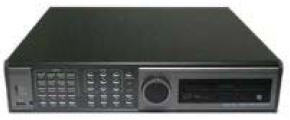To preface this, the intended audience may or may not be in the VoIP industry, they may work for VoIP Supply or somewhere else, they may even be the owner of their own business. This commentary is stream of consciousness and written to reflect on experiences during the week at my company that I hope will be of use to others in some manner. Your comments, positive or negative, are always more than welcome and highly encouraged as I too love to see things from someone else’s perspective in effort to always being improving.
At VoIP Supply, we have some excellence within our management team. We also have ways to improve and provide a greater leadership experience to our staff. Some things that our management staff can, should, and generally do exhibit include (though we can all get even better at):
1) Proper delivery of expectations: Staff needs to know what is expected of them in clear and concise terms, preferably written and reviewed in a timely manner. Ongoing support and coaching to ensure that once delivered, the understanding of the expectations are indeed well known and execution is a simple and easily followed path, are necessary from start to finish but not necessarily in a micro-managed fashion.
2) Follow through on delegation, to get what you inspect, not what you expect: Getting work off your plate is only of value if the results are what you expect and are of value to you such that the work does not need to be redone, finished off, or worse–a complete failure. With regards to delegation of work, you will always get the results expected if you inspect the work prior to completion of the task.
3) Providing just the right amount of rope (not a noose): A truly good manager hires people capable of exceeding expectations and providing enough value that the manager themselves can be promoted and backfill their position with a solid replacement. To do so is to encourage self sufficiency, creativity and opportunity to succeed above and beyond their predefined tasks. Letting staff loose to show their talents and help build the business (should they be motivated to work above and beyond their minimal job description) is critical in developing a team of truly valuable assets. Coach, mentor and follow up with them to ensure that they have not been setup to fail or allowed to wander too far without supervision.
4) Proper message delivery and moderated use of tone: Each team member is different, reacts differently and interprets the manager’s guidance and directives differently. Being sure to deliver the message, positive or negative, in the right medium and with the right tone, is important when hoping to motivate the team rather than threaten them, devalue their work, or create fear of failure and its consequences.
5) Accountability relative to expectations delivered: While I am proponent of positivity, patience and understanding of circumstances beyond the control of the staff member that has been given a particular project or task, holding them accountable remains a necessity. If a task is delivered and accepted, the accepting member of your team must be held accountable for completion of it or communication of its pending incomplete status, reasons for its status and a plan for completion within an adjusted timeframe.
6) Encourage and promote positive two way communications: One of the greatest points of failure in any business is within the internal communications between staff and between departments. It is the responsibility of the management to demonstrate the value and process of effective two way communications, leading by example, coaching and promoting it, rewarding it and ensuring that the team is doing their part within the company.
7) Setting goals and defined points of re-evaluation: Along the same line as setting expectations, the management should be setting goals for celebration of the success of the department. Considering the expectations to be the minimum levels of achievement for the department and the goals are just that, the goals. Sometimes goals are missed and that’s ok, you still have something to shoot for and feel exceptional about achieving. When goals are set too high or unplanned circumstances occur making goal achievement impossible, management needs to set points to re-evaluate those goals and maintain realistic levels so-as to ensure that the goal is not completely unrealistic and therefore not worth striving for.
8.) Leading by example: This one more or less goes without saying, but a good manager needs to lead by example and overachieve those working for them. This should not be confused with squashing the efforts of the staff to ensure that managers continue to look good by preventing others from succeeding. The right thing to do in the situation of a superstar knocking it out of the park is to let them pass and be proud that you groomed such a valuable asset to the company.
9) Understanding the big picture and providing visibility into it: When delegating tasks, assigning team members to a project, critiquing their work, dismissing their suggestions and explaining results and expectations, it is important that the manager understands the overall direction of the company, how their department fits that picture and how the staff fits into the overall big picture of the company. Some are comfortable repeating the same task over and over again while others have ideas and suggestions for improvements. While the suggestions may well be valid and good ideas, they may not fit with the current needs and direction of the company. It is important that ideas and suggestions are not merely dismissed, but shown that the reason for dismissal or non-implementation is that it may not fit the current needs and direction of the company. Thank them for their independent thoughts and suggestions, encourage more of it and educate them on where they should focus their attention relative to additional ideas.



